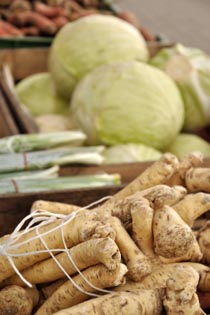Political parties exist for the singular purpose of installing people to positions of power and influence in government. It is the same all over the world and has always been so. To do this they compete with the opposition for support of the electorate by inciting passion over issues of the time. Whether the issues have to do with the economy, national security, individual liberties, the environment, Constitutional interpretations, or matters of moral and social conscience, parties stake claim to various convictions then pretend, as necessary, that they have always been philosophically faithful to their positions. But this is done more often than not to simply gain support in terms of dollars and votes for their own candidates. Additionally, many people are attracted to particular parties over single wedge-issues like abortion or gun control and discount other party positions. So the association of any party over time with a particular political philosophy is problematic at best. Follow along and see if you don’t agree.
The Democratic Party, claiming a position on the left of the political theory continuum, has been labeled “liberal,” both by supporters and detractors alike. The name is derived from the Latin, liber, which means free. And until the end of the eighteenth century, it simply meant “worthy of a free man”. It is from this sense of the word that we speak of “liberal arts”, “liberal sciences”, “liberal occupations”, etc. Then, beginning in the early part of the nineteenth century, the term came to imply the qualities of intellect and behavior that were considered to be characteristic of those who occupied higher social positions, whether because of wealth, education, or family relationships. Thus, an intellectually independent, broad-minded, magnanimous, frank, open, and genial person was said to be liberal. The suffix, “ism,” added to descrip- tive words produces nouns that mean a belief, an ideology, or study, as to be immersed in. “Liberalism” then connotes a political system or tendency that is opposed to centralization and absolut- ism. However, the word liberal is generally used in a derogatory way today by those who subscribe to more conservative philos- ophies. For them, a liberal is someone who believes in big govern- ment and wasteful, giveaway social programs (background/definition).
Most who have political persuasions to the right on the political theory continuum label themselves, “conservative.” According to Webster, being conservative means a tendency to conserve or to hold back. But this understanding of the term does not necessarily apply to all who consider themselves to be Republicans today. Since the end of the Civil War in America, conservatives have tended toward resisting change and preserving established insti- tutions. Thus, a conservative person would be one who would tend to be more moderate or cautious. But it was Republicans, as we all recall, who brought about the end to slavery in America though the Civil War years and the adoption of the 13th, 14th, and 15th Amendments during Reconstruction – this was major social change (background/definition and History of the Republican Party)!
The Republican Party today attracts many different groups, including sportsmen and other gun owners who consider their right to bear arms to be under attack, business corporations (particularly defense, energy, and pharmaceutical industries) and wealthy individuals who benefit from limiting social programs, limiting regulations, and reduced taxes, as well as various funda- mental or evangelical Christian groups who are lobbying for social change. The party had its roots in opposition to slavery when, in 1854, former members of the Free Soil Party, the Whig Party, the American Party, and some Democrats came together in opposition to the Kansas-Nebraska Act, which would have allowed these territories to enter the Union as slave states. Party founders adopted the name “Republican” to indicate that it was the carrier of “republican” beliefs about civic virtue, and opposition to aristocracy and corruption (History of the Republican Party,Republican Party Today, and Reconstruction Period).
In western democracies the terms, “conservative” and “right-wing” are often used interchangeably, as near-synonyms. This is not always accurate, but it has more than incidental validity. The political opposition is referred to as the political left (although left-wing groups and individuals may have conservative social and/or cultural attitudes, they are not generally accepted, by self-identified conservatives, as being part of the same movement). On economic policy, conservatives and the right generally support the free market and side with business interests over rank-and-file workers and environmentalists. This is less true of conservatives in Europe and in places other than the United States. Attitudes on some moral issues, such as opposition to abortion, same-sex marriage, and euthanasia, are often described as being either right-wing or conservative. Liberals, on the other hand, have traditionally drawn much of their support from labor unions, small farmers, civil servants, environmentalists, artisans, academics, philanthropists, immigrants and such – the “huddled masses”. Collectively, liberals pretty much agree today that government should be a force for social change, to improve the lot of the disadvantaged and to protect the individual rights of all Americans, regardless of their race, sex, ethnicity, or sexual orientation. Liberals would tend to agree that all should have affordable access to quality education and health care (Right-wing, Left-wing).
The Democratic Party in the United States traces its roots back to the early 1790s, when various factions united in opposition to Alexander Hamilton’s fiscal policies, which included a strong central treasury and new taxes to pay-off the states’ debts. Back then it was called the Anti-Administration Party, its subscribers were called Anti-Federalists. For a time, this movement was added to other minor parties to form the Democratic-Republican Party under Thomas Jefferson. Yes, in some ways, if not in name only, the two major political parties of America were combined. Then, after the War of 1812, the party split over whether to build and maintain a strong military. Those favoring a strong military, especially a modern navy, came to be called the Old-Republicans. Then, during the administration of Andrew Jackson, the Democratic Party was reborn, appealing, as had Jefferson’s Democratic-Republican Party, to the largely agrarian society of the times and to the common man. At that time, the Old Republicans strongly favored states rights, while Jackson, even though he was a Southerner, put down the Nullification Crisis which threatened to divide the nation – North and South (History of the Democratic Party).
So, the distinction between liberal and conservative political philosophies and the Democratic and Republican parties in the United States, over time tends, to blur. Philosophies and allegiances have switched back and forth over the years. For example, after the Civil War, most whites in the South became Democrats (Southern Democrats), known then unofficially as the “White Man’s Party“. Then, following the signing of the Civil Rights Act of 1964, many of these Democrats switched over to support Republican candidates.
And so it goes; political parties come and go. Sometimes the names stay the same, but the philosophies and respective positions on issues change according to the winds of war and fortune. I say it is impossible to separate politics from economics.
It’s all about power and influence.









